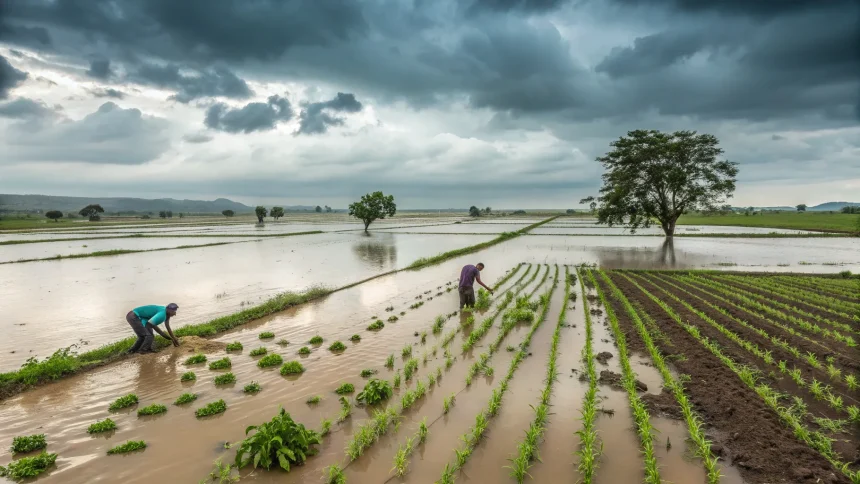Farmers across central and south India are bracing for significant financial losses as heavy rainfall continues to damage essential kharif crops. The downpour has particularly affected urad, tur, soyabean, and cotton plantations, raising concerns about potential supply disruptions in the coming months.
The agricultural sector, already facing challenges from irregular weather patterns this season, now confronts the additional burden of crop damage at a critical growth stage. These rains come at a time when many farmers had invested heavily in their kharif cultivation, hoping for a productive harvest.
Impact on Vegetable Markets
In Mumbai, vegetable prices have temporarily plummeted as buyers remain indoors due to the persistent rainfall. Market analysts note that this price drop is likely short-lived, with a sharp increase expected once the rains subside and normal purchasing patterns resume.
Local vendors report that perishable produce is particularly affected, with leafy greens and seasonal vegetables seeing the steepest price declines. “We’re selling at much lower rates just to move inventory before it spoils,” explained one market trader who preferred to remain anonymous.
The current situation creates a brief window of affordability for consumers who can brave the weather, but market experts warn this advantage will quickly disappear as supply chains adjust to the crop damage.
Pulse Market Stability
Despite the damage to domestic pulse crops like urad and tur, consumers may not see significant price increases for these staples. This stability is attributed to the substantial availability of imported pulses in the market, which should help offset potential shortages from local production.
India has increased pulse imports in recent months, creating a buffer that may prove crucial in maintaining price stability. Government reserves are also being monitored for potential market intervention if needed.
“The current import stocks should help us maintain stable prices despite the damage to domestic crops,” a food ministry official stated.
Long-term Agricultural Concerns
The recurring pattern of extreme weather events damaging crops has raised questions about long-term agricultural planning and risk management. Farmers in the affected regions face not only immediate financial losses but also challenges in preparing for the next planting season.
Agricultural experts suggest that the damage to cotton crops may have the most lasting economic impact, as cotton requires specific growing conditions and has a longer growth cycle than many food crops.
The soyabean crop damage could affect both domestic food oil production and animal feed availability, potentially creating ripple effects through related industries.
Weather forecasters predict that the rain pattern may continue for several more days in parts of central India, potentially expanding the affected areas and increasing the severity of crop damage.
As assessment teams begin to quantify the extent of agricultural losses, state governments are reviewing disaster response measures and potential relief packages for affected farming communities. The final impact on national agricultural output will depend on weather conditions in the coming weeks and the ability of farmers to salvage portions of their damaged crops.







